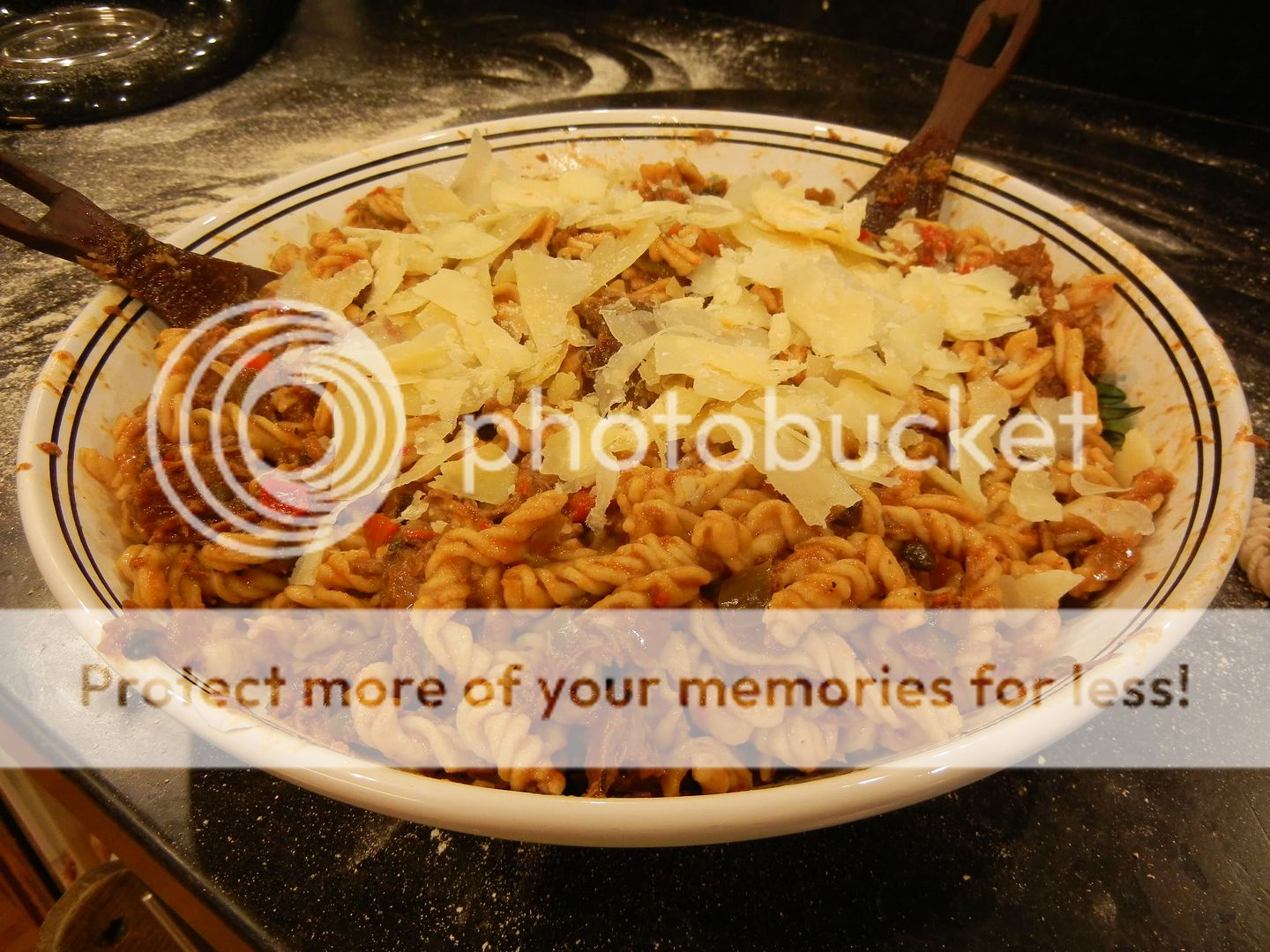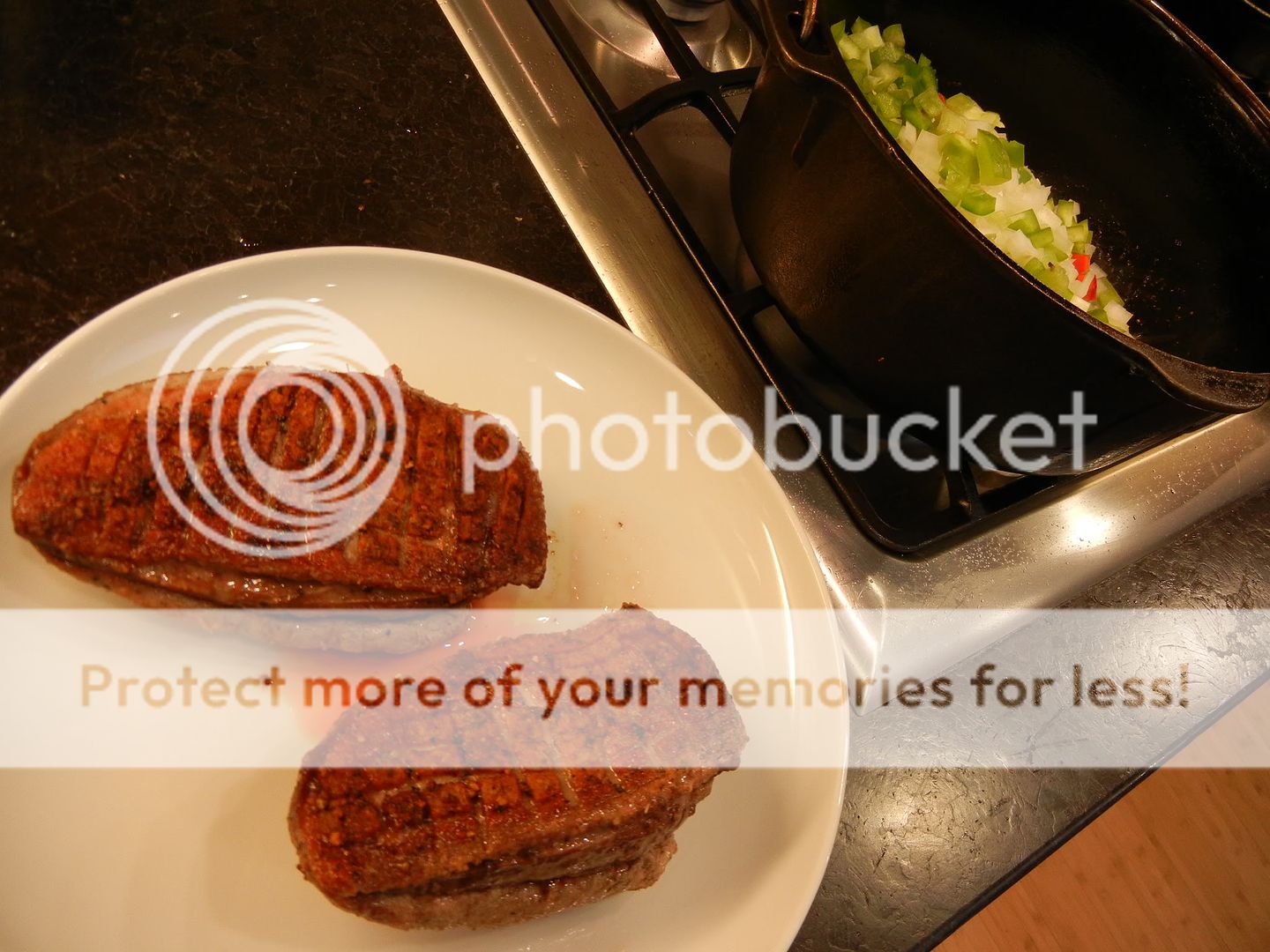My summer garden is gone. It’s currently chopped up and breaking down in the compost bin and the only thing I’m doing out there now is keeping the weeds at bay and waiting for Kathy’s winter lettuce crop to sprout. The heater in the house is running most of the time now that the weather is getting cold and damp. Now is when I start thinking about hearty, rustic dishes that seem much more appropriate this time of year than in the heat of summer. Rich, dark earthy dishes that stick to your ribs and warm the soul rule the day and dominate the kitchen.
Duck Ragout is among my favorite dishes of this type. By definition a “Ragu” is simply meat added to a sofrito, puréed tomatoes or tomato paste and cooked for a good while via a low simmer. There are a number of different styles, the most common being a Bolognese sauce followed by a Napoletana (bigger chunks of meat rather than ground or shredded) and Barase which is usually made with horse meat…not an option. The majority of Duck Ragout recipe’s call for the use of skinned leg/thigh meat. I prefer to use duck breasts as it allows me to render off the delicious duck fat for use in other dishes. Follow along:
Hardware:
- 4qt Dutch Oven
- Two large serving forks
Software:
- 2 Large Duck Breasts
- 1 Large Onion, Coarsely Chopped
- 1 Green Bell Pepper, Coarsely Chopped
- 1 Red Bell Pepper, Coarsely Chopped
- 1 Carrot, Finely Chopped
- 1 Rib Celery, Finely Chopped
- 1tbsp Diced Garlic
- 2tbsp Caper Berries
- Handfull of Basil Leaves
- 1 6oz Can Tomato Paste
- 1c Red Table Wine
- 1c Chicken Stock
- 1/2c Parmgiano Reggiano
- 3tbsp Olive Oil
- Kosher Salt
- Fresh Ground Pepper
You’ll want to make pasta for this dish, here’s how – HOME MADE PASTA
Make your pasta dough first and get it in the fridge to chill.
For the ragout, start by scoring the skin on the duck breasts and liberally seasoning both sides with the kosher salt & freshly ground pepper. You don’t need to cut all the way through the fat into the muscle tissue, just score the skin like so:
Let the salt & pepper work on the meat for a few while you chop your veggies and set them aside in a bowl. Then get your Dutch Oven warmed up over a medium-high flame with a tbsp of olive oil. Place your duck breasts into the pan, meat side down and sear them off for about 2.5 min. Then turn the flame down to a medium-low and flip the duck breasts to skin side down. You want a cooler flame here because we aren’t so much trying to sear this side as trying render off the fat and gently crisp the skin. It should be gently sizzling in there not “frying”. It should take about 20min or more to fully render off the fat and get the skin nicely crisp.
Once done, remove the breasts to a plate, drain off your fat and commence sweating down your onion, bell peppers, carrot & celery along with the remaining olive oil and a good dose of salt & pepper. Remember, “sweat” the veg, don’t fry.
When the veggies have gone soft toss in the garlic, chopped basil leaves, capers, wine, stock & tomato paste and stir. Then drop in your duck breasts and bring the pot to a gentle simmer. You will be cooking this for about 1.5hrs or until the duck breasts are tender and can be easily pulled apart with a fork.
Once the breasts are good and tender pull them out of the sauce. If the sauce is still rather thin keep it on the heat to reduce, otherwise shut it off for now. Let the breasts cool a bit so you can handle them then using the two large serving forks shred the meat. It’s ok if you have some inconsistency in the size of the bits of meat. You aren’t going for finely shredded some rustic chunkiness is ideal. Once complete, toss the shredded meat back into the pot and combine.
At this point you’ll want to make your pasta. The rustic nature of the dish calls for a equally rustic pasta. I made fusilli but a thick papardalle or rigatoni works well too. Cook your pasta (3min for fresh, 5-7 for dry) and reserve a bit of your pasta water (1/8 cup or so) before you drain it. Then toss the cooked pasta and your sauce together in a serving bowl and garnish with a bit of freshly shaved Parmgiano Reggiano.
 |
| The Bowl Is A Little Messy...I Was In A Hurry |
As an aside, I purchased what I thought was an "extra fine" unbleached wheat flour yesterday made by "Bob's Red Mill". It's absolute rubbish. It was horribly inconsistent in the grind. There were massive chunks of germ or bran. It did taste fantastic, but the texture of the resulting pasta was way gritty. I was shooting for "rustic" in this dish, but this was positively medieval. Don't use this stuff for pasta.
Remember to let your duck fat cool a bit before putting it in a jar and tossing it in the fridge for other use. Here is 6oz of delicious, unctuous duck fat that I'll put to good use later.
 |
| Mmmmmmm, Duck Fat |
Give this one a try and let me know how you like it!
Thanks for reading,
True



You should plant winter rye in your garden to restore nitrogen to the soil -- and also to crowd out the weeds.
ReplyDelete